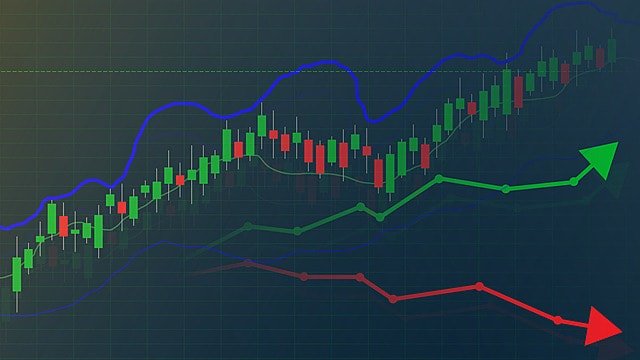
S&P futures are among the most widely recognized instruments in the world of financial markets. For newcomers looking to understand futures trading, these contracts can serve as a practical entry point into the broader system. While the concept of futures trading may initially seem complex, using a familiar instrument like S&P futures makes it easier to grasp.
This article explores how beginners can use S&P futures as a foundation to build their understanding of futures trading concepts, mechanics, and strategies.
Understanding the Basics of S&P Futures
S&P futures are standardized contracts that track the value of the S&P 500 index. When traders engage in these contracts, they are agreeing to buy or sell the index at a future date at a predetermined price. This price fluctuates with the value of the underlying index. The S&P 500 index itself represents a basket of 500 large U.S. companies and serves as a major indicator of overall market performance.
For someone learning about futures trading, S&P futures are useful because they relate directly to a well-known market benchmark. As a result, the connection between market movement and contract behavior becomes easier to recognize.
Core Components of Futures Trading Explained Through S&P Futures
When you examine the structure and function of S&P futures, you begin to understand several key concepts that apply to futures trading as a whole:
1. Leverage
S&P futures provide exposure to the entire S&P 500 index without requiring full capital investment. This demonstrates the concept of leverage—controlling a large position with a smaller amount of money. This concept is central to futures trading, and understanding how leverage works in S&P futures helps traders grasp its rewards and risks.
2. Margin Requirements
Trading S&P futures involves margin, which is the amount of capital required to open and maintain a position. Learning about initial and maintenance margin while trading these contracts introduces beginners to risk control in futures markets.
3. Contract Specifications
Each S&P futures contract has a defined tick size, tick value, and expiration date. These specifications are critical in all futures contracts and provide practical examples of how contracts are standardized and traded across global exchanges.
4. Expiration and Settlement
All futures contracts have an expiration date. By studying the behavior of S&P futures approaching expiration, new traders can understand how contracts are either settled in cash or offset before expiry.
Using S&P Futures to Practice Chart Analysis
Another way beginners can use S&P futures to understand futures trading is by analyzing price charts. These contracts often mirror movements in the equity markets, which allows traders to test basic technical analysis skills.
Studying patterns such as support, resistance, trends, and volatility on S&P futures charts helps traders develop an analytical mindset. Since these futures are actively traded, the price movements are fluid and provide real-time opportunities for observation and learning.
Order Types and Execution
Executing trades in the S&P futures market helps traders understand different types of orders used in futures trading. Market orders, limit orders, and stop orders are all frequently used in S&P futures trading.
By practicing with S&P futures, new traders can gain experience in managing trade execution, setting stop losses, and using limit entries. This also introduces the concept of trade discipline, which is vital in every futures trading strategy.
Market Timing and Economic Events
Because the S&P 500 index reflects broad economic health, S&P futures react strongly to major news, earnings reports, central bank decisions, and economic data releases. This correlation offers a valuable lesson in how futures contracts respond to market events.
Traders who monitor the economic calendar and observe how S&P futures react to key events begin to understand how news impacts futures trading. Over time, this builds their ability to anticipate market behavior and manage trades accordingly.
Risk Management through S&P Futures
A major component of successful futures trading is risk management. S&P futures offer a structured way to apply these principles. By adjusting position size, setting stop-loss orders, and defining trade objectives, new traders learn how to control their exposure.
S&P futures also allow traders to explore hedging—an essential function of the futures market. For example, investors who hold stocks in their portfolio can use short S&P futures to reduce their downside risk during uncertain market periods. This teaches how futures serve not just for speculation but also for protection.
Transitioning from Theory to Practice
Studying futures trading through books or videos gives foundational knowledge, but applying that theory using S&P futures bridges the gap between learning and experience. Paper trading S&P futures—trading them in a demo environment—can help traders practice without real money, while still understanding real-time movements and execution challenges.
As a result, learners develop habits like trade journaling, entry and exit planning, and emotional discipline—skills that are essential in live trading.
Long-Term Value of Understanding S&P Futures
Even after moving on to other instruments in the futures market, the knowledge gained from S&P futures remains valuable. The structure, behavior, and volatility of these contracts are similar to those in other markets, whether you’re dealing with commodities, currencies, or bonds.
Because the S&P 500 index is such a foundational benchmark, familiarity with its futures contracts equips traders with insights that apply across financial instruments. In this way, S&P futures act as a bridge not just into futures trading, but into professional market participation.
Final Thoughts
Learning futures trading doesn’t have to be overwhelming. By starting with S&P futures, traders can understand key principles like leverage, margin, order types, chart analysis, and risk management in a focused, practical setting. These contracts offer a simplified yet realistic view into the futures market, making them an excellent tool for education and strategy development.
Whether your goal is to trade full-time or simply understand how markets function, studying S&P futures provides a meaningful path toward mastering the larger world of futures trading.

